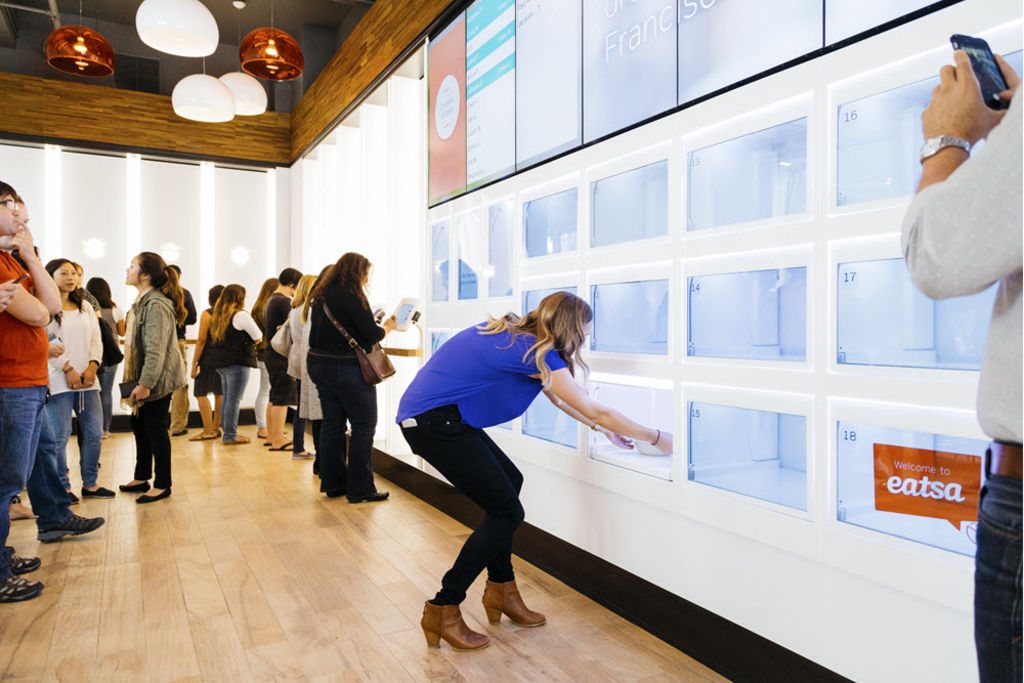
Automated-restaurant firm Eatsa closes five outlets
COMMENT
Tim Carman
Eatsa has pulled the plug on five of its automated cafes, including two in Washington, and perhaps all the artificial intelligence alarmists can breathe easier: People may have reduced their interpersonal communication to texts and emails, but they’re clearly not ready to sacrifice all human engagement in something as intimate as a restaurant. At least not quite yet.
Launched two years ago in tech-savvy San Francisco, where software engineers can read complex code but can’t always read the body language of a bored date, Eatsa is basically designed to take the human element out of the restaurant experience.
The founders, including former Google exec David Friedberg, have dragged the old coin-operated Horn & Hardart Automats into the 21st century, with an emphasis on technology and vegetarian fare.
Each Eatsa location runs lean and mean: It has no waitstaff, cashiers or busers. The cooks are concealed behind a sleek, high-tech facade, as faceless as the coders who created the software necessary for the operation. The only flesh-and-blood people are the unfortunate folks hired to roam the floor, asking customers if they need assistance.
To dine at Eatsa, customers have to swipe a credit card at a touch-screen kiosk and then select one of the rice or quinoa bowls (or salads) on the menu, each available for customisation. Within minutes, your order appears inside a “cubby,” a cute little cube with a transparent LCD screen that spells out your name. It’s both unbelievably cool and chillingly bloodless. It’s the dining equivalent of ordering bedsheets on your phone and having them appear on your doorstep the next day.
Eatsa has invited a lot of comparisons to “The Jetsons,” the ’60s-era cartoon that imagined a future with push-button dining. But after eating at the K Street NW location a couple of times before it closed, I think the more apt analogy is “The Omega Man,” in which Charlton Heston plays the “last man on Earth.” Eatsa is the latest high-tech endeavor – behind computers, smartphones, live-streaming, robotic delivery services, blah, blah, blah – that makes us feel lonelier than God.
You could argue that Eatsa has completed the circuit for uncoupled millennials and singles from every other generation: They can now go an entire workday without interacting with real people. The lunchtime cafe has long been the one spot where office hermits could escape the splendid isolation of their cubicles and talk to colleagues, rediscovering the humanity that lay dormant beneath their digital lives.
I don’t know, maybe it’s all part of a secret, union-busting conspiracy. How can the workers unite if they never see one another anymore?
Personally, I think the founders of Eatsa have overestimated the draw of technology or, perhaps more to the point, they couldn’t imagine that people might be repelled by a restaurant that resembles a giant smartphone. Their folly, I suspect, is they don’t understand the fundamental attraction of a restaurant. They might not even know the etymology of the word.
According to Merriam-Webster, the word “restaurant” comes from the French language, from the present participle of restaurer, meaning “to restore.” Historically, restaurants served as a restorative to weary travellers, and they function much the same way in modern society. As Eve Turow Paul writes over at Forbes, where she contemplates the intersection of food culture and millennials, numerous studies have shown:
“. . . the links between technology and increasing rates of loneliness, depression, and anxiety. Many in this young generation battle a creeping sense of nugatory existence by connecting over a meal – whether it’s by cooking for family, dining out with friends, or chatting with others online about gluten-free recipes. My research clearly shows these human-facing moments and deeper instances of interaction help soothe this digitally-connected generation.”
I don’t think technology’s negative effects are felt only by millennials, either, though that generation may (and I emphasise may) have a more intimate relationship with its phones than older folks. I mean, I don’t know a single person who says she wants to spend more time on her phone. We all know the soul-sucking nature of the wired life.
Yet, in its statement on Monday on the retail closings, Eatsa hints that it will return to a location near you. Which leads me to raise a question to the owners: Do you really think people want to visit a restaurant that may contribute to their sense of isolation?












